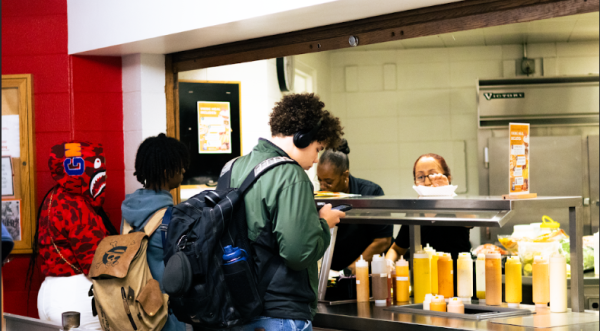Tumultuous Turns
How to stay safe in winter road conditions

Driver’s Education teacher Matthew Ramos says he “sees it all the time,” when it comes to reckless driving on icy roads.
“Cars spinning out, losing control, slamming into other cars or driving off the roadway,” he said.
According to the Federal Highway Administration, more than 116,800 people are injured, and more than 1,300 people are killed because of icy, slushy or snowy roads every year.
“I am amazed to see the amount of aggressive drivers in the winter weather,” Ramos said. “Drivers are driving too close behind cars or driving too fast for the conditions. There is a lot of tailgating going on out there.”
He also says people are not taking the necessary precautions to prepare their cars for winter conditions.
“Another problem I see on the roads is the large number of blowouts, which is the sudden loss of air in the tire,” Ramos said. “This is due to potholes from snow plows and people not properly inflating their tires.”
Not only will the frosty roads alone cause a serious accident, but combining that with the other daily commotions on the road can also make it very dodgy for drivers.
“All of the distractions that are already present within the car combined with dangerous weather conditions definitely make for a more treacherous driving environment,” Driver’s Education teacher Marc Condotti said. “Failing to adjust properly to the weather conditions amplifies all other risks already associated with the driving task.”
Having to deal with both the distractions and the winter weather conditions can be very challenging for drivers who are just learning how to drive.
“It’s a lot harder driving in the winter,” Sophomore Courtney Commodore said. “You have to deal with icy and unpaved roads. It’s also super bright when there’s snow, which makes it hard to see.”
Along with these concerns can also make a beginner driver very anxious when having to deal with this type of weather.
“I often get nervous that someone will cut me off or slide into me when it’s dark and icy,” Commodore said. “I just try to drive with more space between me and the other drivers.”
Although driving during the winter has stirred up some nerves for Commodore, it has also helped her discover a major tip for driving.
“I have learned that you have to drive for other people,” Commodore said. “Not everyone follows all the rules of they teach you in Driver’s Education.”
While Commodore was able to learn some important tips early on, for Junior Mia Schumann it took a major experience to learn some of these things on her own.
“Last year during a storm I got stuck in the middle of a road in my car coming home at night at 11 and I had to call me mom,” she said. “It was scary and I thought I was stuck on a pond. I had to learn how to deal with the adversities of driving in the snow, such as drifting, sliding on ice, get stuck. They don’t teach that in Driver’s Education simply because the weather conditions aren’t the same.”
Although learning how to drive in these conditions can vary for both inexperienced and experienced drivers, Ramos says there are still some tips both types of drivers could use.
“Make sure your car is equipped to handle the conditions – battery, tires, etc. Leave enough time to get to your destination; traffic will be moving slower than normal,” He said. “Have enough time and space around your car, doing so reduces your risk of collision, and whether it is winter or any other season stay off your phone.”





